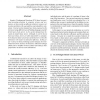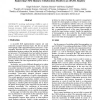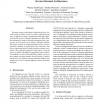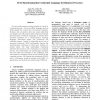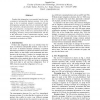WECWIS
2006
IEEE
14 years 5 months ago
2006
IEEE
— To ensure the operability and reliability of large scale Enterprise Resource Planning Systems (ERP), a peak-load oriented hardware sizing is often used. Better utilization can ...
WECWIS
2006
IEEE
14 years 5 months ago
2006
IEEE
Iterative Combinatorial Auctions (ICA) have been getting increasing attention in computer science and economics, as they provide an efficient solution to resource allocation prob...
WECWIS
2006
IEEE
14 years 5 months ago
2006
IEEE
Distributed event-based middleware (DEBM) provides a basis for the interoperation of autonomous components in large-scale systems. Transactions ensure the atomic and reliable exec...
WECWIS
2006
IEEE
14 years 5 months ago
2006
IEEE
WECWIS
2006
IEEE
14 years 5 months ago
2006
IEEE
In today’s businesses we can see the trend that serviceoriented architectures (SOA) represent the main paradigm for IT infrastructures. In this setting, a software offers its fu...
WECWIS
2006
IEEE
14 years 5 months ago
2006
IEEE
UN/CEFACT’s modeling methodology (UMM) is used to develop global choreographies of inter-organizational business processes. UMM models should be publically available in order to...
WECWIS
2006
IEEE
14 years 5 months ago
2006
IEEE
In a service-oriented e-commerce environment, it is a crucial task to help consumers choose desired products efficiently from a huge amount of dynamically configured product can...
WECWIS
2006
IEEE
14 years 5 months ago
2006
IEEE
Economic resource allocation in Application Layer Networks (such as Grids) is critical to allow applications and users to effectively exploit computational and data infrastructure...
WECWIS
2006
IEEE
14 years 5 months ago
2006
IEEE
Correct synchronization among activities is critical in a business process. Current workflow languages such as BPEL specify the control flow of processes explicitly. However, thei...
WECWIS
2006
IEEE
14 years 5 months ago
2006
IEEE
Product data integration is an essential issue for many e-commerce interoperable business systems. Core to this issue is how to maintain semantic consistency between heterogeneous...

